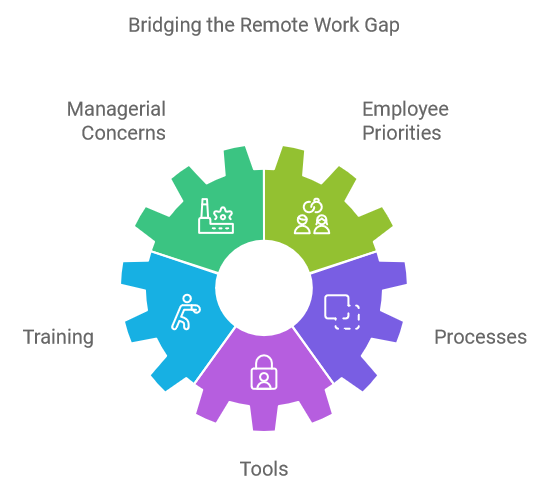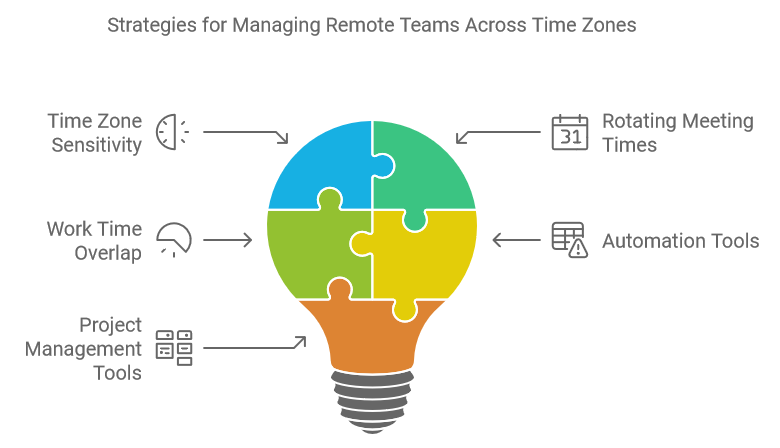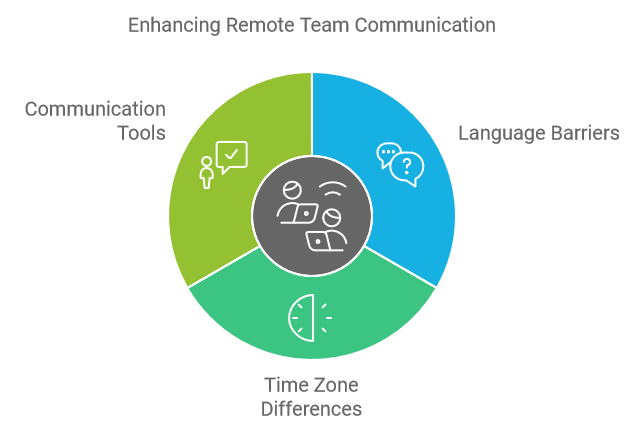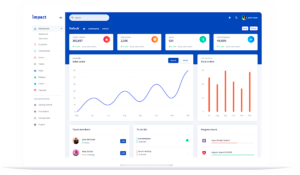Challenges of managing remote employees
4 min read
In the last decade, technology and high-speed internet have helped overcome some challenges of managing remote employees. The State of remote work 2019 report by OwlLabs found that 48% of US workers work remotely at least once per week, and 30% work remotely full-time. Of the people who work remotely at least once a month, 49% work remotely full-time. These are big numbers and there are many reasons why there are so many remote employees.
Businesses can save as much as $11,000 a year on each employee who works remotely. There is no need for office space, and in many cases, remote employees use their own computers for work. The overhead costs for remote employees are lower compared to those working in the office.
Many surveys also suggest that remote employees are as productive as those working in an office. So companies not only save money, but they also get more output from employees. It’s no wonder then that so many companies offer flexible work options.
Research also suggests that remote employees are happier, less stressed, and happier. In fact, remote employees may be even willing to take a small pay cut in order to work remotely. The OwlLabs report also found that full-time remote workers say they’re happy in their job 22% more than people who never work remotely. They are also 13% more likely to stay in the job for five or more years.
But if you’re thinking of jumping on the bandwagon and hiring remote workers at your business, you need to consider a few things. There are still some challenges in managing remote employees.

Mismatch between priorities of remote employees and their managers

This is one of the biggest challenges in managing remote employees. Research shows that most remote employee managers are worried about productivity and whether the employees are getting their work done. But most employees say they work remotely to be more productive, save on commute time, and to focus on work.
Employees are more worried about loneliness and loss of engagement with the rest of the team. If allowed to persist, it can lead to loss of motivation, lower productivity, poor work quality, and attrition.
Given these differences, it’s natural for conflicts to surface. For example, the manager may want to track employee time to see if the employees are doing their job. But the employees may see it as an invasion of their privacy or lack of trust. Similarly, when employees complain about feeling lonely, the manager may not take it seriously or see it as an excuse for a drop in productivity.
A combination of training, processes, and tools can bridge the gap between and help you overcome this challenge. Training can help both sides understand and appreciate each other’s concerns. For example, using employee time tracking software creates transparency and trust between the two. Managers can spend more time building employee engagement rather than questioning timesheets and output.
Using a video conferencing tool like Zoom can help build familiarity and bonding between team members. Seeing other people, even if on the computer, makes remote employees feel that they are part of a team. They are less likely to feel lonely and will be more engaged and productive.
The challenge of managing employees across time zones

One of the advantages of hiring remote employees is that you can find a talented employee no matter where he lives. This means remote employees could be distributed across different time zones in the US and other countries. Imagine organizing a meeting between employees who live on the US east coast, US west coast, Eastern Europe, and India. A good time to meet for the US employees will be a late evening for those in India.
Again, training and the right tools can help you overcome this challenge or at least minimize its impact. When you sensitize people about the need to respect each other’s family time, they are more likely to accommodate each other. You can rotate a recurring team meeting to take place at a different time each week so no worker has to always meet in the evening. You could also ask everyone to have some overlap between their work timings.
Automation and project management tools can also help overcome this challenge. A software developer in India can notify his co-worker in the US when he checks in new code. The co-worker will can then continue to build on that work during his working time.
Communicating with remote employees is challenging

Communicating with a team spread across a country or the world is always a challenge. People may speak different languages and may interpret the same thing differently. There is also the challenge of making sure that every remote gets information at the same time, not easy when some team members may be sleeping while others are working.
Using tools like Slack can make communicating super easy with even a globally distributed team. Employees get the message immediately and get a notification. You can create groups of employees to control the message distribution. Slack is one of the most popular communication tools for remote teams.
Sensitizing your remote team to differences in cultures of different employees can help avoid friction and miscommunication.
Resolving these challenges in managing your remote team can give your business a lot of benefits. But don’t expect to overcome these challenges overnight. It’s going to take time, effort, and patience.
Like every new system, you will need to adjust and improve your processes and tools. Be open with your team about the issues and involve them in solving them. Try multiple tools and choose the one that works best for your team, management style, and business.


